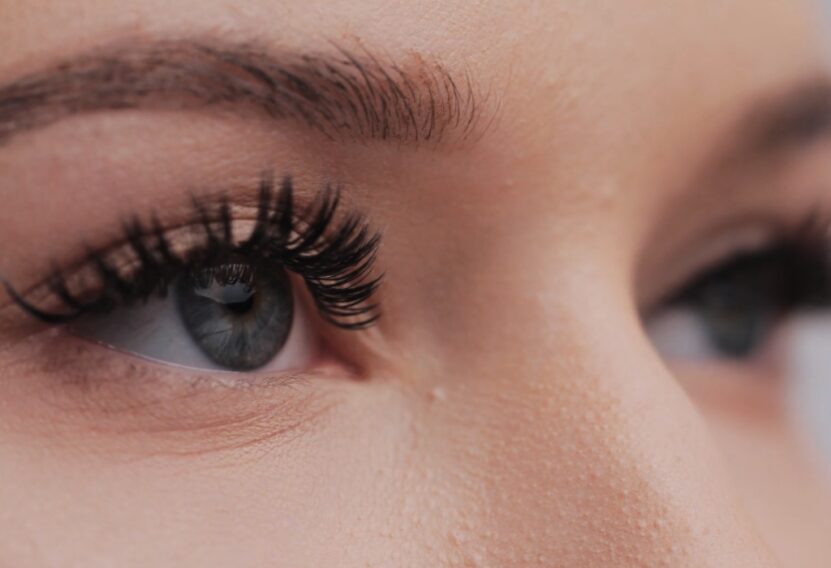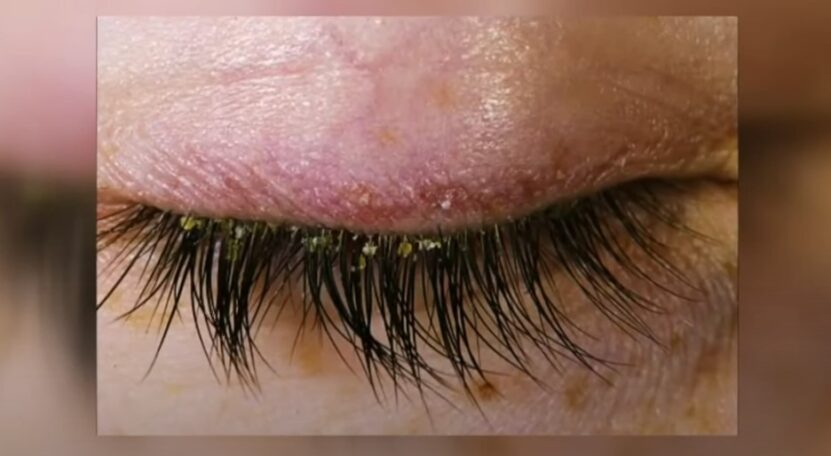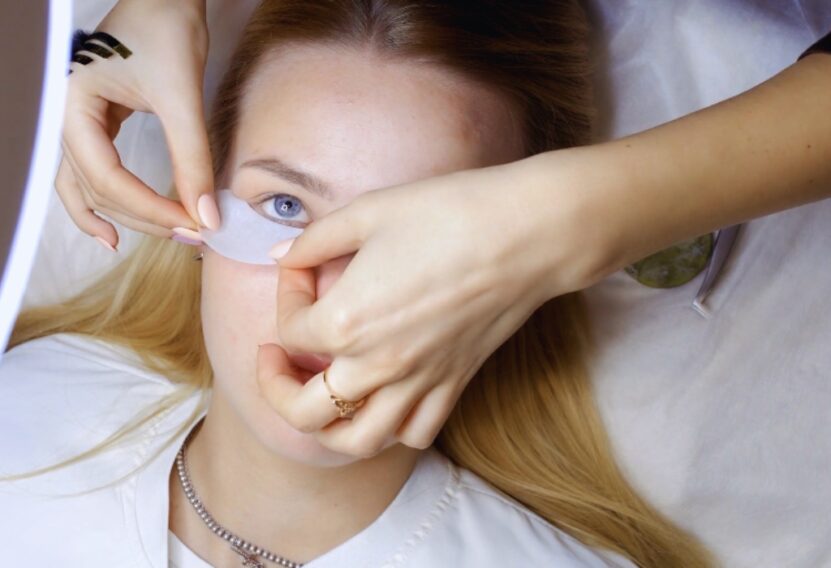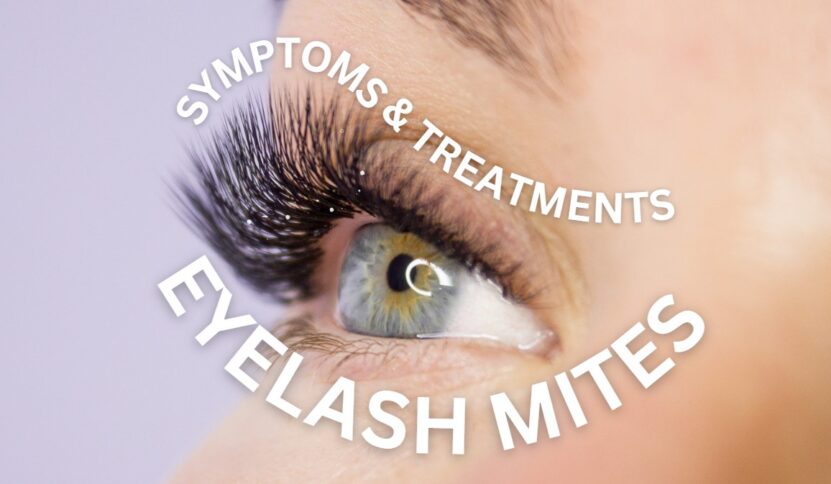Tiny, nearly invisible, and living on our eyelashes — these characteristics define a particular kind of microscopic mite known as Demodex. Most of us might never realize they’re there, as they’re generally harmless. However, under certain circumstances, they can multiply and lead to some uncomfortable symptoms, causing eyelash mite infestation. Knowing what to look out for and understanding treatment options are key steps to dealing with this unsettling situation. In this blog post, we will delve into the fascinating, if somewhat off-putting world of these tiny creatures, aiming to help you recognize and manage a potential infestation effectively.
Understanding Eyelash Mites
Firstly, let’s unravel the mystery of what eyelash mites are. Officially named Demodex, they belong to the family of mites that prefer human habitats, especially our eyelashes. This type has a short life cycle of 14-18 days, during which they breed, eat, and eventually die, all within the follicles of our lashes. They are most active during the night, coming out to mate and lay eggs. In normal conditions, they coexist with us peacefully, causing no harm. Yet, not everyone is equally prone to an infestation.
Research suggests that factors like age, compromised immune function, and certain skin conditions can increase susceptibility. With age, the population of these mites tends to increase; hence, older individuals have a higher risk. Moreover, individuals with certain skin conditions like rosacea and dermatitis are also more susceptible.
Symptoms of Eyelash Mite Infestation

So, how do you know if your harmless Demodex mites have turned into a problem? The most common symptoms include itching, redness, and irritation around the eyes. This discomfort often intensifies at night when they are most active.
Additionally, you might notice a crusty buildup around your eyelids and the base of your eyelashes, commonly known as ‘eye gunk.’ Some people may experience more severe symptoms, such as inflamed eyelids (blepharitis), decreased lash growth, or even loss of eyelashes (madarosis).
Recognizing these signs is crucial because an unchecked infestation can lead to more serious conditions, including persistent skin problems and eye infections. Hence, if you notice these symptoms, it’s essential to seek medical advice for an accurate diagnosis.
Diagnosing Eyelash Mite Infestation

If you suspect an infestation, the next step is to get a definitive diagnosis. A healthcare professional, typically an optometrist or dermatologist, can diagnose Demodex infestation. The most common diagnostic method involves taking a sample of eyelashes or eyebrow hairs for microscopic examination.
The doctor may also conduct a skin scraping in some cases. Consulting a professional is of paramount importance as self-diagnosis can often lead to inaccurate results. It’s worth remembering that the presence of Demodex mites doesn’t necessarily mean you have an infestation, as they are a natural part of our skin’s ecosystem. It’s the overpopulation and related symptoms that indicate an issue.
Treating Eyelash Mite Infestation

Once diagnosed with an infestation, it’s time to take action. The treatment can involve over-the-counter remedies or prescription treatments, depending on the severity of the infestation. Tea tree oil is often the first-line remedy due to its proven efficacy against Demodex mites. It can be applied topically as a diluted solution, but always under the guidance of a healthcare provider due to its potential to irritate the eyes.
In severe cases, a doctor may prescribe topical or oral antibiotics to deal with any associated infections. Along with medical treatment, maintaining eyelid hygiene is crucial. Regular cleaning with a doctor-recommended solution can help prevent the mites from multiplying and alleviate symptoms.
Preventing Eyelash Mite Infestation

Prevention is always better than cure, and when it comes to this infestation, taking proactive measures to avoid it can save you from the discomfort and inconvenience it can cause. Maintaining good eyelid hygiene is paramount in preventing an infestation. By incorporating simple habits into your daily routine, you can significantly reduce the risk of eyelash mites taking residence on your lashes. One crucial step in preventing eyelash mite infestation is to clean your eyelids regularly with a gentle, doctor-approved cleanser.
This helps to remove any accumulated debris, oils, and dead skin cells that can create an ideal environment for them to thrive. When cleansing, be gentle and avoid excessive rubbing, as it can irritate the delicate skin around the eyes. In addition to proper eyelid hygiene, it is important to regularly replace your eye makeup and brushes. Over time, these items can harbor mites and bacteria, increasing the likelihood of an infestation. Opt for high-quality makeup products and ensure that they are not expired.
Avoid sharing makeup and cosmetic tools with others, as this can transfer mites and further heighten the risk of infestation. Beyond good hygiene practices, certain lifestyle adjustments can also contribute to minimizing the risk of eyelash mite infestation.
Managing stress levels is crucial, as stress weakens the immune system and makes you more susceptible to various health issues, including infestations. Incorporating stress-reducing techniques such as meditation, exercise, or engaging in hobbies can help promote overall well-being and support a healthy immune system.
Maintaining a balanced and nutritious diet is another lifestyle factor that can positively impact your skin and eyelashes. Consuming foods rich in vitamins, minerals, and antioxidants can nourish your body from within, promoting healthier skin and lashes. Consider incorporating foods like fruits, vegetables, whole grains, and lean proteins into your diet to support optimal eyelash health.
By adopting these preventive measures and incorporating them into your daily routine, you can significantly reduce the risk of eyelash mite infestation. Remember, taking proactive steps to protect your eyelids and practicing good hygiene not only prevents mite infestation but also contributes to overall eye health. Prioritizing self-care and seeking professional advice if needed will help you maintain healthy and beautiful eyelashes for years to come.
Conclusion
While the thought of tiny mites living on our eyelashes might be unnerving, understanding them better can help us coexist peacefully with these tiny creatures. If you’re experiencing symptoms like eye irritation, itching, or redness, it’s essential to seek professional help.
With proper diagnosis and treatment, an eyelash mite infestation can be effectively managed. In the long run, practicing good eyelid hygiene, avoiding shared makeup, and looking after your overall health can go a long way in preventing infestations and promoting overall eyelash health. Stay educated, stay vigilant, and remember your health is in your hands!

